
by Henry Vermillion
Close Looking, part 1
The painter Ed Osman was one of the original members of our gallery when we opened in 2001 in the patio courtyard of the old Meson de San Jose on Calle Mesones. Ed would sit with his coffee and newspaper at a table in the patio when it was his day to work the gallery. "Ed! We've got a desk inside; you're supposed to be in there! What if somebody wants to buy something?" "I can tell who'll buy something," he would say. He couldn't be persuaded. And he was usually right. If the person lingered inside longer than five minutes, he or she was a real prospect, and Ed got up, and he often sold something.
His plan makes sense. Most gallery-goers absorb all the culture they want that day by making a quick pass around and then out. A small fraction, however will pause to actually look at a painting, look more closely, and then wonder about the piece. Is it skillfully painted? If not, was that on purpose? Who's the artist? And, of course, the price. (Granted, there are those---women, usually, may I say it—who turn to their spouse: "What do you think, George? I think this matches the drapes.") By close looking, I mean wondering why the painter painted a face green? Does the painting suggest a story? What is it that makes the picture interesting or different? This is close looking.
I recently read a review of an early painting by Jasper Johns—perhaps the first of the many that he did of the subject. At the bottom of the painting, the reviewer found faintly lettered words which had been painted over and were not clearly visible to the casual viewer. (I didn't notice them at all.) As I recall, the words painted over were "hate" and "no", or others equally negative. The reviewer pointed out that the painting was done soon after Johns had been dumped and betrayed by his friend and lover Robert Rauschenberg. Johns was angry and anguished, as might be expected, but over the words, he painted, of all things, an American flag.
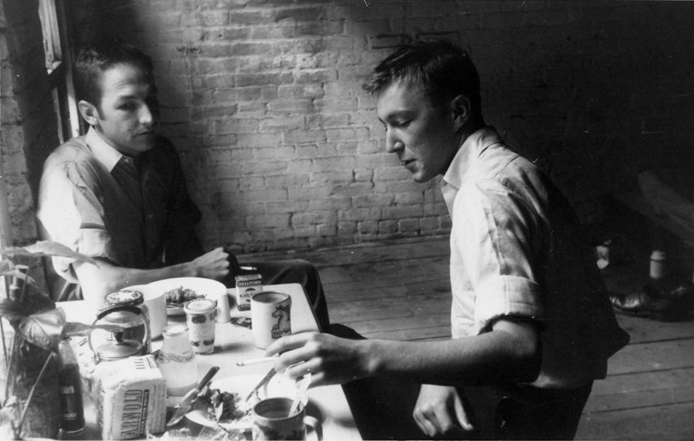
Jasper Johns and Robert Rauschenberg
***
I'm not a fan of Jasper John's work. Like some other painters, I have wondered what the fuss was about. But by closely reading the picture and by fleshing out the events of the painter's life at the time, the painting becomes at least more sympathetic. But why an American flag? Two (or maybe more) good reasons come to mind. First, the obvious: any therapist will advise an aggrieved or suffering person to not dwell on the pain. Get your mind on other things, do something different. And, painting a rough image of the flag seems innocuous, but was also a bit audacious, after all, in the contemporary big city art scene of the day. Secondly, he correctly sensed that the poohbahs in charge of the New York art scene were ready for change. The macho, let-it-all-hang-out Abstract Expressionists had run their course; it was time for something new. Why not something more quiet, more banal (with a wink), more reserved? And third, I suspect that Johns was not the kind of painter who could invent new and different means to express his feelings, as did, say, artists such as Pollock, Francis Bacon, or of course, Picasso. Johns painted to impress a coterie of New York poets and critics, and he won his bet. The time was right.
So, thanks to the critic/reviewer who wrote the article. A good job. He read the picture closely and filled in the necessary background. And, like it or not, the American flag rouses childhood memories of security and pride of country in most of us Americans. Better than another top-of-the-voice expression of personal problems, eh?
To sum up: serious art deserves a close look. Figure out why or how the artist made this interesting/beautiful/strange/unusual or happy thing, and make up your own mind.
Close Looking, part 2
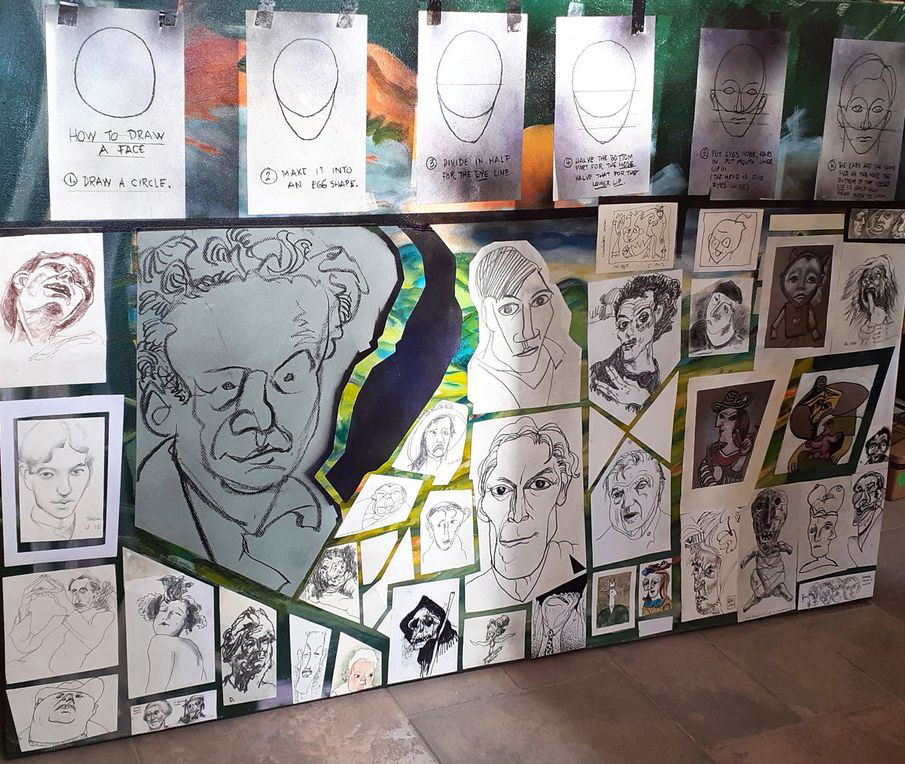
"How to Draw a Face" Henry Vermillion, Collage on painted canvas, 36"x 60"
***
¨How to Draw a Face¨ is a piece I made for my own pleasure, and it's made for close looking. It's a collection of drawings of artists and styles I've admired and learned from over time. The top six sheets show the standard academic steps art students, at least in the past, used to learn how to draw any adult human face from the front. Below, the rest of the canvas is covered by a mosaic of faces by artists who often bent or broke the rules above in various expressive ways.
Drawings of five artist's faces are among them: Daumier (#1), Pascin (#2), Picasso (#3), Schiele (#4), and Francis Bacon (#5).
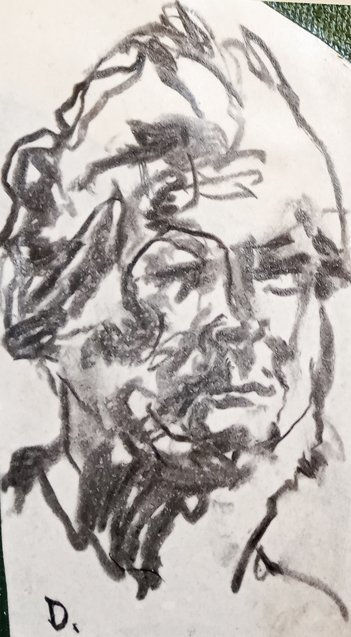
1. Daumier
***
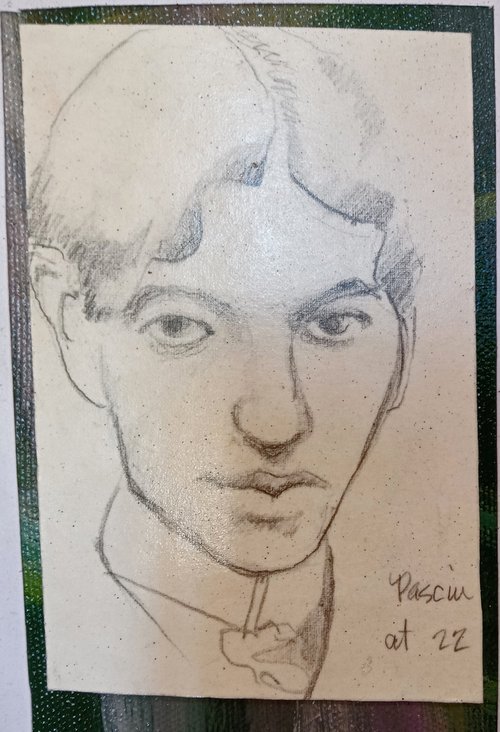
2. Pascin
***
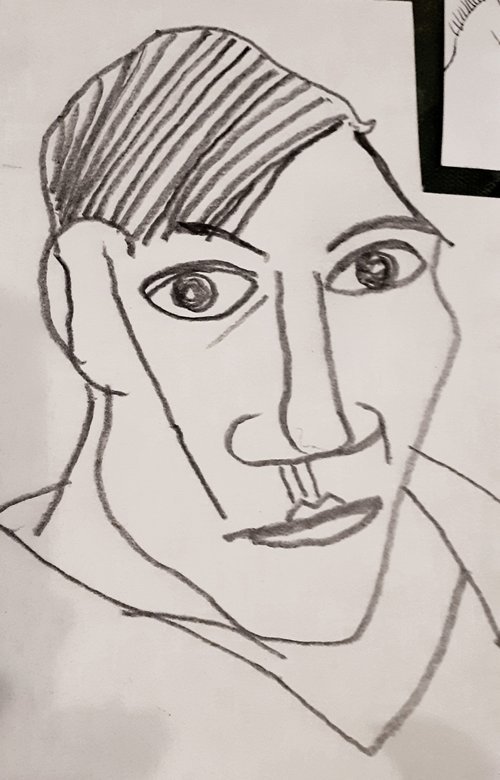
3. Picasso
***
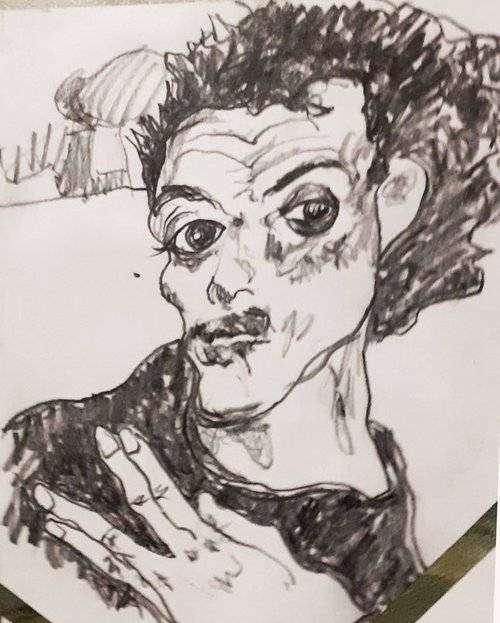
4. Egon Schiele
***
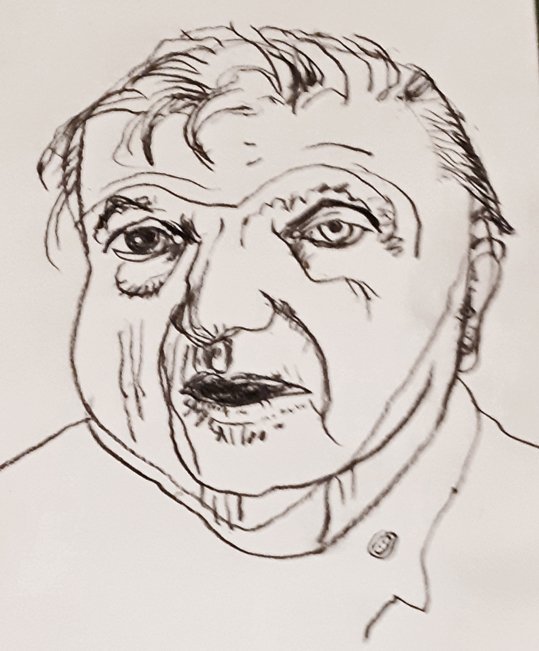
5. Francis Bacon
***
Two of Daumier's drawings are included, along with four by Picasso, three by the Mexican Jose Luis Cuevas, (#6 and two others), a horrific one by Goya (#7) showing the god Cronos eating one of his children, four by the political caricaturist Steve Brodner (#8, #9, and two others) and one each by the San Miguel artists Juan Ezcurdia (#10) and Ray Herrera (#11).
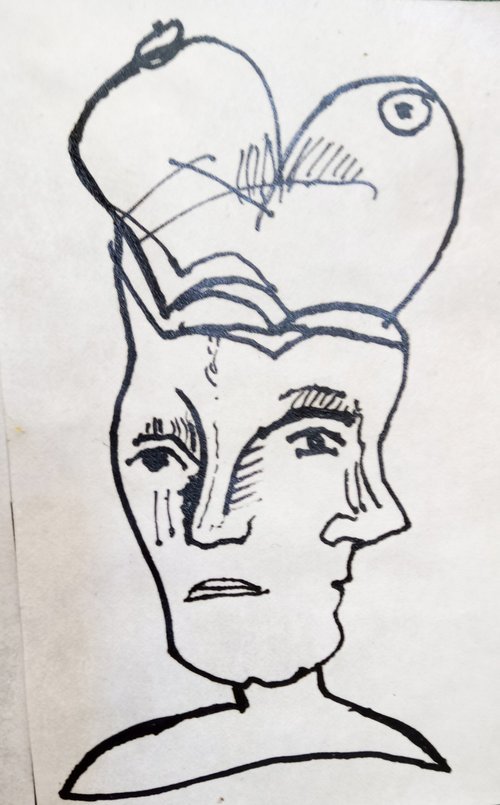
6. Jose Luis Cuevas
***
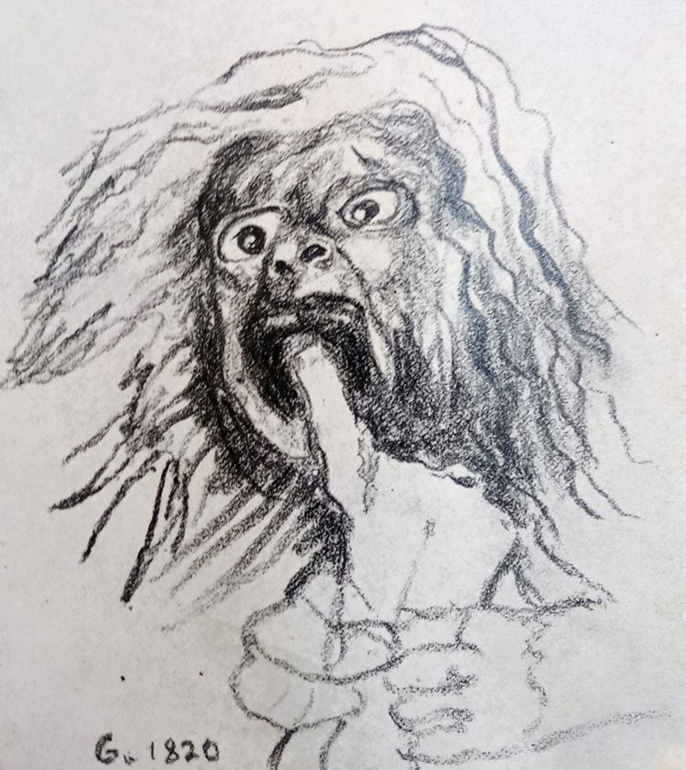
7. Goya
***
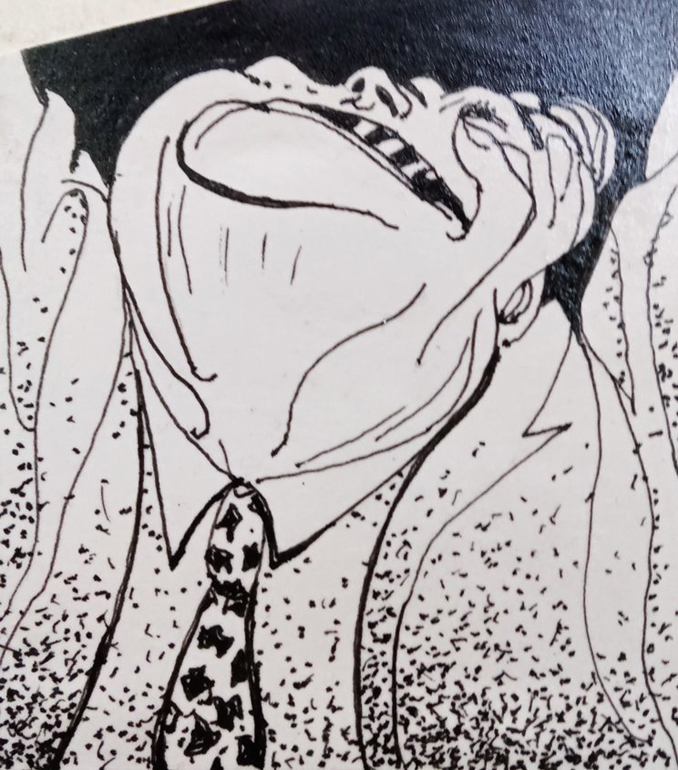
8. Steve Brodner
***
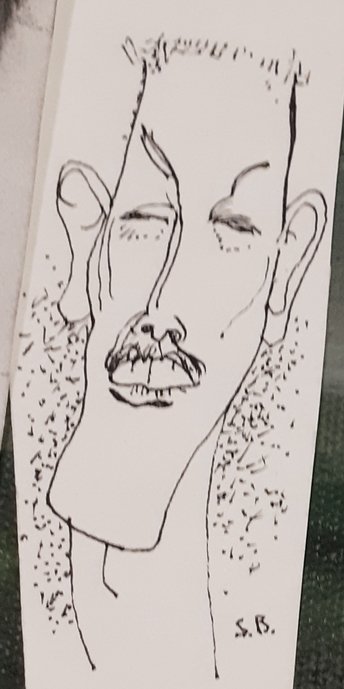
9. Steve Brodner
***
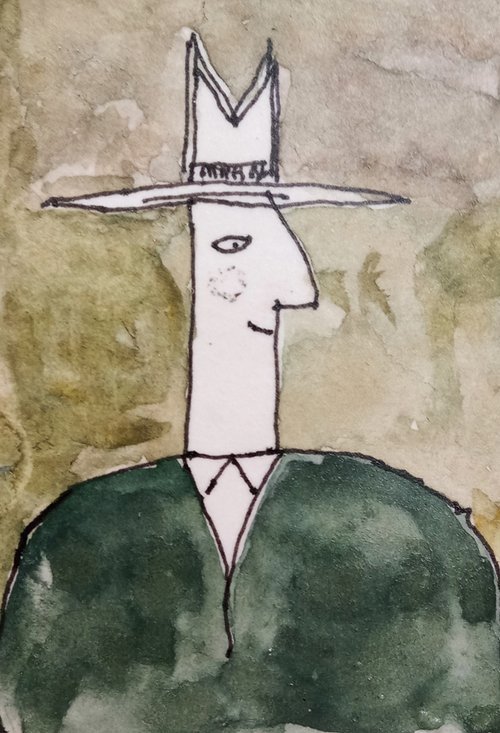
10. Juan Ezcurdia
***
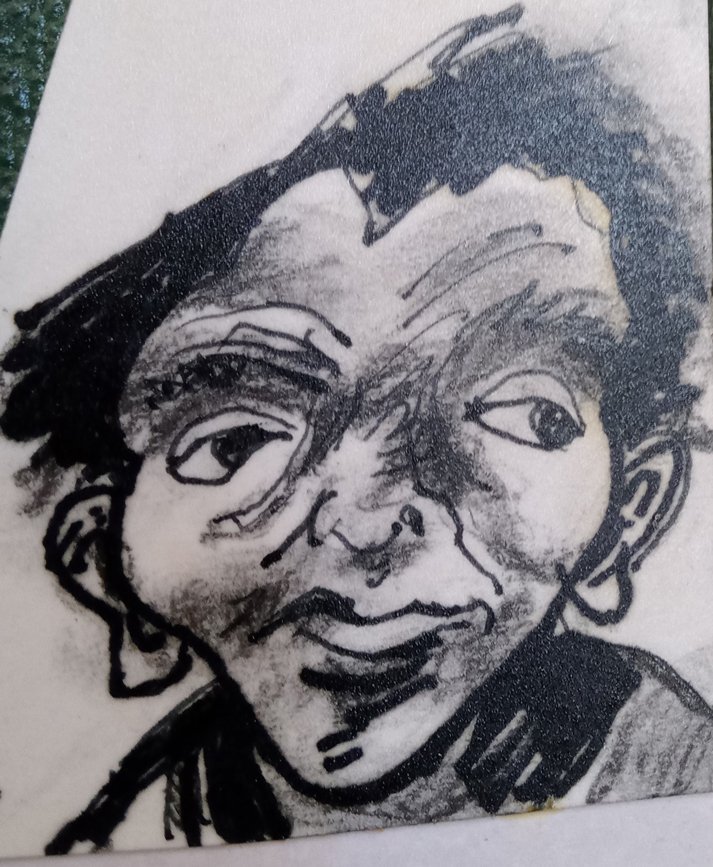
11. Ray Herrera
***
A tiny piece at the bottom of the large surface pairs two versions of mothers: a realistic and sympathetic face by Grant Wood ("American Gothic"), and an explosive face (maybe of his own mother), by Willem de Kooning (#12).
In the upper right corner are three tough faces by Jack Levine, one of my favorite painters, (#13). A face drawn by my daughter when she was four years old (#14) is next to a wonderfully free drawing I found on a poster pasted on a wall in Charleston, South Carolina (#15).
On the bottom right side are four imaginative faces by the Spanish painter Gerardo Cantu (#16) which I copied from a museum in Madrid. Most of the remaining drawings are mine, including the big gray face in the center and the large face to the right, which I took from a photo of Charlie Watts, the late Rolling Stones drummer (#17).
The sad, big-headed figure with yellow teeth in the lower right (#18) was drawn from a paper-mâché figure I own which was made by a young seminarian studying to be a priest.
(I should make it clear that I own no Picasso or Francis Bacon drawings to paste onto this piece, and that the copies of their and all the other artist's works were made by me.)
One of the pleasures of "How to Draw a Face" is that when I look closely at any of the faces, I recall their work, their style, their era---for example, that of Schiele: I'm reminded of the intensity of his paintings, of his wondrously erotic drawings, of his time in jail (for painting immoral pictures), and of his sad early death from the Spanish flu.
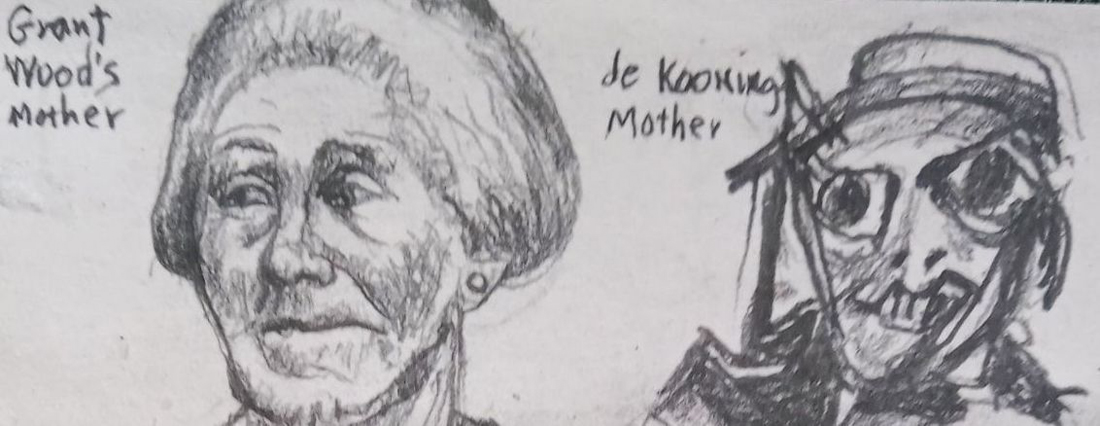
12. Grant Wood, Willem de Kooning
***
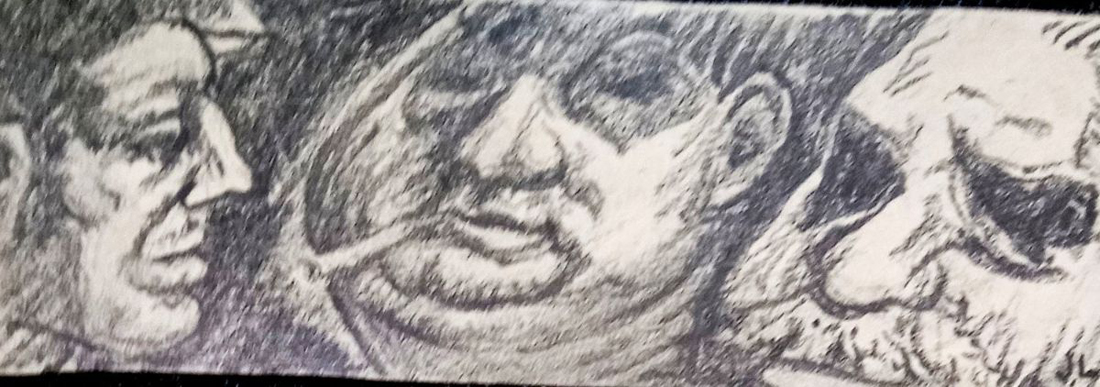
13. Jack Levine
***
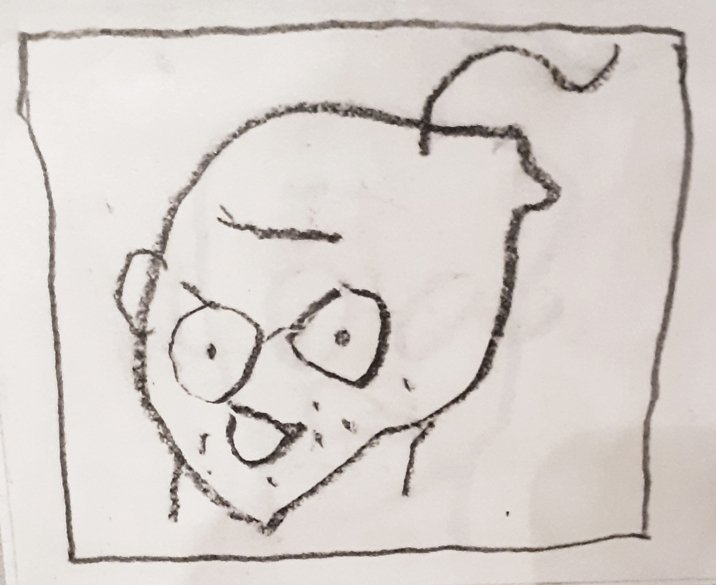
14. Alissa Vermillion
***
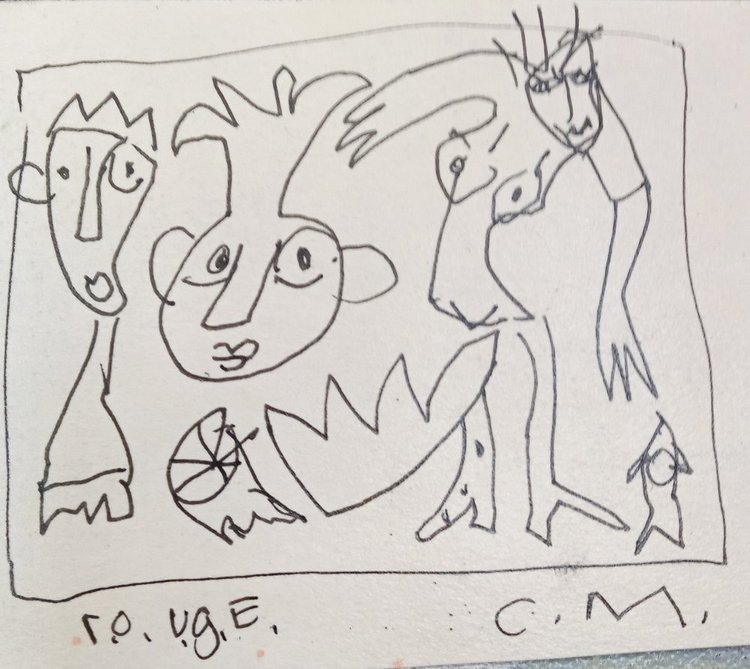
15. Poster on a wall in Charleston
***
A look at Picasso's image recalls his beginnings as a traditional 19th century painter who became such a multifaceted wizard that he changed the course of art in the 20th century, and so on with each of the dozen or so other artists whose faces or work is pasted onto the underlying canvas. (The canvas shows the remains of a large green landscape I could never get to work.) And, finally, there are dozens of other collages that could be made of other good, interesting or important artists...

16. Gerardo Cantu
***

17. Charlie Watts
***
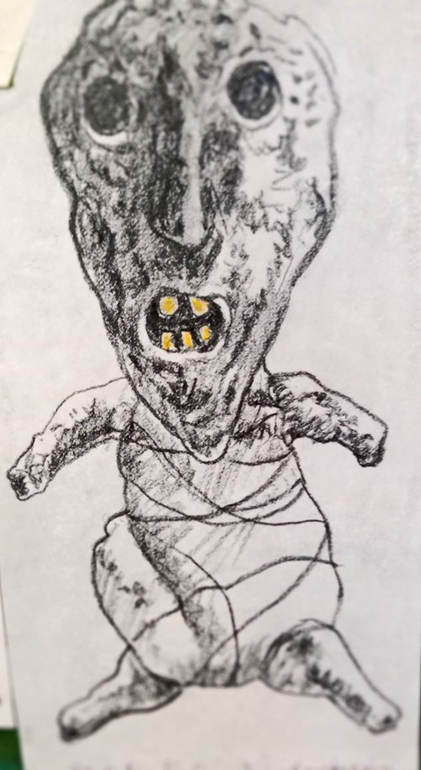
18. Young seminarian's piece
***


www.henryvermillion.com
**************

Henry Vermillion was born in El Paso, and grew up in small towns in Texas and New Mexico. He graduated from the University of New Mexico in Albuquerque, with degrees in English literature and biology. He studied Social Work in the MSW program at the University of Texas in Austin.
He is a U.S. Army veteran. In Raleigh, North Carolina, he was president of the non-profit Wake Visual Arts Association. In 1995, he was awarded the Raleigh Medal of the Arts.
In November of 1992, Henry, his wife Britt Zaist, and five other painters opened the co-op Galeria Izamal, which, until its closing in January of 2022, was San Miguel's oldest art gallery.
